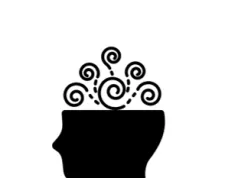Eye Movement Desensitisation and Reprocessing (EMDR) is an interesting, if unusual form of therapy that is seemingly effective for trauma-related conditions – mainly post traumatic stress disorder.
It focuses on retraining the brain to process past traumas in a different and healthuer way, with a therapist using a few different techniques to achieve this.
EMDR mainly involves following a therapist’s hand movements while recalling past traumas. Unlike most trauma-focused therapies, EMDR has the potential to work very quickly.
EMDR was the brainchild of Doctor Francine Shapiro – an American psychologist. She used her own experiences to help craft this form of therapy.
In doing so, she produced an eight-step approach towards EMDR – which, if followed, should lead to successful treatment. In theory, whenever EMDR is carried out, it should use these eight steps as a rough schedule.

What is EMDR?
Eye Movement Desensitisation and Reprocessing (EMDR): While more of a newer treatment, EMDR is an exciting intervention that has helped many people cope with trauma-based conditions. This therapy involves an individual moving their eyes from side-to-side, with the therapist directing their eye movements. During this, the individual recalls their traumatic experience. EMDR is believed to help an individual change how they think about the traumatic event, with the therapist aiming to facilitate change.
Phase One: History and Treatment Plan
To begin with, the therapist will review the history of the patient – and look at the possible triggers for their ill mental health.
This will also involve the patient revealing any past traumas that have affected them – and will allow the therapist to see the traumatic events that the duo will be hoping to resolve.
Phase Two: Preparation for EMDR
Before EMDR gets underway, less intensive coping mechanisms are taught for when the patient is stressed or in a poor emotional state. This includes deep breathing and mindfulness.
Phase Three: Patient assessment
This stage involves the therapist and patient identifying the specific memories or events that have caused the patient problems.
These will then be targeted during EMDR – with a focus on the thoughts, physical symptoms and emotions that are associated with these traumatic memories.
Phase Four-Seven: Treatment
The main part of treatment takes place from phase four to seven – which is the actual treatment. Throughout this stage, the therapist will use different techniques to try and help the patient overcome their trauma.
It usually involves a patient focusing on a past trauma, while following a therapist’s hand with their eyes, normally at a rapid pace.
The patient’s mind will generally be blank at this point, and he/she will become aware of the immediate thoughts and conscience beliefs while in this state of mind,
Once the thoughts and feeling are identified, the person will be told to move on to a different trauma, or to refocus on the trauma. The idea is to gradually lower the intensity of the traumas.
Phase Eight: Evaluation
At the end of each session of EMDR, a therapist will ask their patient how they are feeling. This allows the progress of the therapy to be charted, and for challenges and other obstacles to be identified.
Eventually, the hope is that the progress made will be clear, and that the person will have overcome their traumas, and are able to proceed with their life in a healthier way.
Summary
While EMDR won’t always follow this system, Dr. Shapiro intended for this process to always be used, as she believed it would maximise the chances of success.
Irrespective of the system used, the important thing is that the patient gets better through therapy. It is important to track the progress of therapy, and hopefully it will result in an improvement in symptoms.
See Also
- Therapy Home
- Everything You Need To Know About Talking Therapy
- FAQ’s About Talking Therapy
- Eye Movement Desensitisation and Reprocessing: Everything You Need to Know
- The Advantages and Disadvantages of Eye Movement Desensitisation and Reprocessing
- 8 Things You Should Know About Eye Movement Desensitisation and Reprocessing
- The Science Behind Eye Movement Desensitisation and Reprocessing
- The Eight Phases of Eye Movement Desensitisation and Reprocessing
Disclaimer
This website should be used purely for informational purposes, and does not intend to, nor should it ever, be used as a replacement for professional medical advice.
We strive to keep all of our pages updated, and ensure that our website is full of factual and in-depth information. However, we encourage you to browse this website with care.
As a reminder, this website and all content within it cannot and should not replace the advice of a trained medical professional. You can read our full disclaimer at this link.
Helplines
If you are struggling with your mental health, help is available. With the right support and treatment, you can make a recovery. For information on helplines, or if you are in a state of crisis, please visit our crisis page by clicking on the relevant link for your geographical location (United Kingdom), (United States), (International). You can also see how to get mental health treatment and the process involved by clicking this link.



































